Discover the mind-blowing future of display technology! From flexible screens to transparent displays, we delve into the incredible advancements that will revolutionize industries. Get ready to be amazed! Read now.
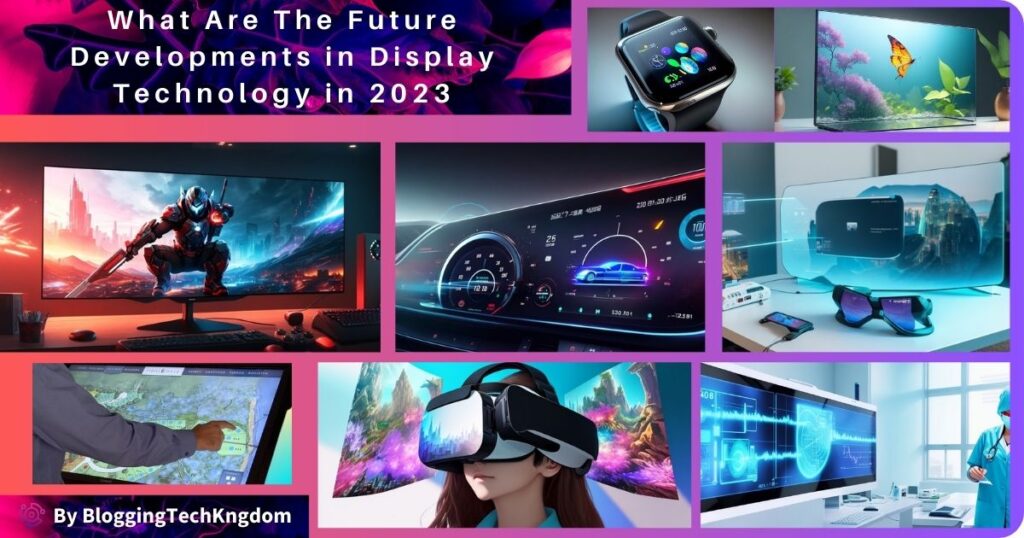
The Evolution of Display Technology
Display technology has experienced remarkable advancements over time especially from year 2000, moving from cathode ray tubes (CRTs) to LCDs (liquid crystal displays), and currently progressing to more advanced options like OLED (organic light-emitting diode) and QLED (quantum dot light-emitting diode) and MicroLED, MiniLEDS to Retina displays etc. These developments have resulted in significant improvements in picture quality, energy efficiency, and sleeker designs. However, the future holds even more exciting prospects for more energy efficiency and User Experience that will completely transform how we perceive and engage with visual content to over day to day life.
OLED and MicroLED Displays

In recent times, OLED displays have garnered immense recognition owing to their remarkable capability of delivering profound blacks, vivid colors, and exceptional contrast ratios. Unlike conventional displays, OLED displays empower each pixel to emit its own light, facilitating meticulous control and enabling the incorporation of features like authentic blacks. Looking ahead, we anticipate continuous advancements in OLED technology, including augmented brightness levels and prolonged lifespan, to elevate the user experience even further.
Conversely, MicroLED displays introduce an innovative technology that opens up vast opportunities. These displays consist of tiny LEDs that independently emit light and can be precisely controlled on an individual basis. MicroLED displays provide outstanding brightness, energy efficiency, and scalability. Although the current manufacturing expenses are substantial, ongoing research and development endeavors are expected to improve affordability and availability in the coming years.
Flexible and Foldable Displays

Flexible and foldable displays have already made their way into the market with devices like foldable smartphones and rollable televisions. These displays utilize technologies such as OLED and flexible substrates to allow for bending, twisting, and folding without compromising on image quality. In the future, we can anticipate more advanced iterations of these displays, offering increased durability, larger form factors, and improved user experiences.
Transparent Displays

Transparent displays possess immense potential to bring about a paradigm shift in various industries, including retail, automotive, and architecture. Currently in the nascent stages of development, these displays offer a distinctive feature that allows users to view digital content while maintaining visibility through the display. Imagine a car windshield that seamlessly presents information without hindering the driver’s line of sight or retail store windows that elegantly showcase products and promotional offers. The opportunities presented by transparent displays are boundless, and their widespread adoption is anticipated to grow exponentially in the years to come.
Augmented Reality (AR) Displays
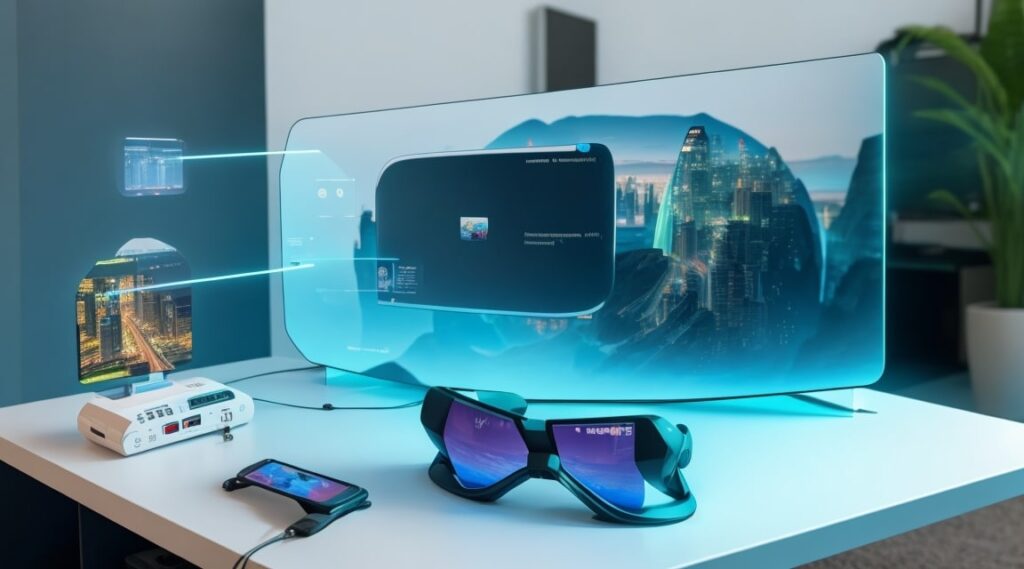
Augmented reality (AR) is a revolutionary technology that enriches our real-life encounters by seamlessly integrating digital elements. By overlaying a digital layer onto our environment, AR creates a captivating and interactive atmosphere. With the help of devices such as smart glasses and heads-up displays, we can effortlessly merge the virtual and physical realms. While current AR displays are in their early developmental phase, forthcoming progress will concentrate on broadening the field of vision, enhancing display resolution, and elevating the overall AR experience to unprecedented heights.
For details related gaming experiences in AR technology you can check out our blog post here.
Virtual Reality (VR) Displays
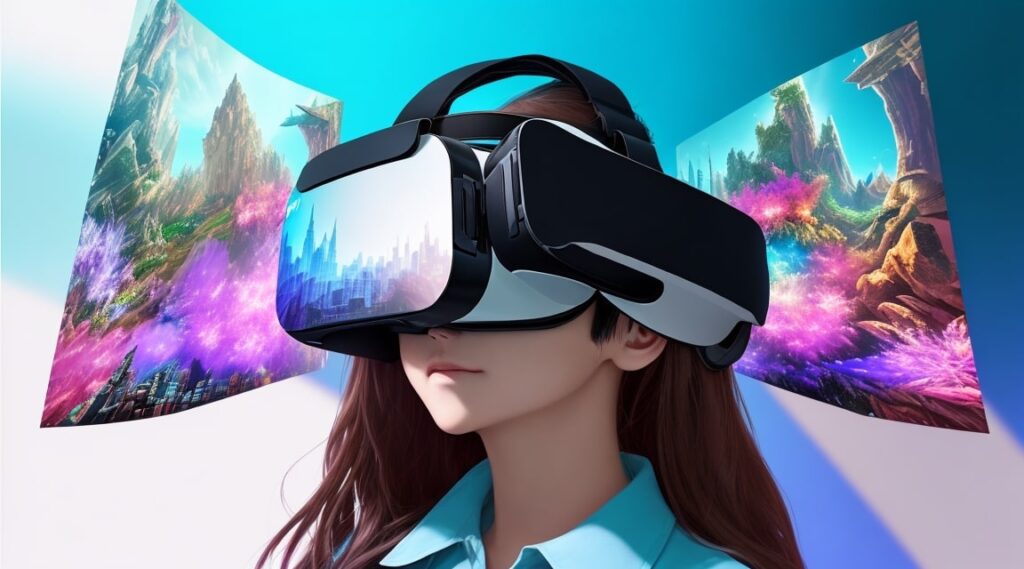
Virtual reality (VR) transports users into a fully digital realm, unlocking a multitude of possibilities spanning from gaming and entertainment to training simulations and virtual tours. Through VR displays like headsets, individuals are enveloped in a visually immersive experience that convincingly transports them to alternate realities. The future of VR displays is poised to address challenges such as reducing motion sickness, enhancing display resolution, and further enriching the feeling of being truly present within the virtual environment.
Quantum Dot Displays
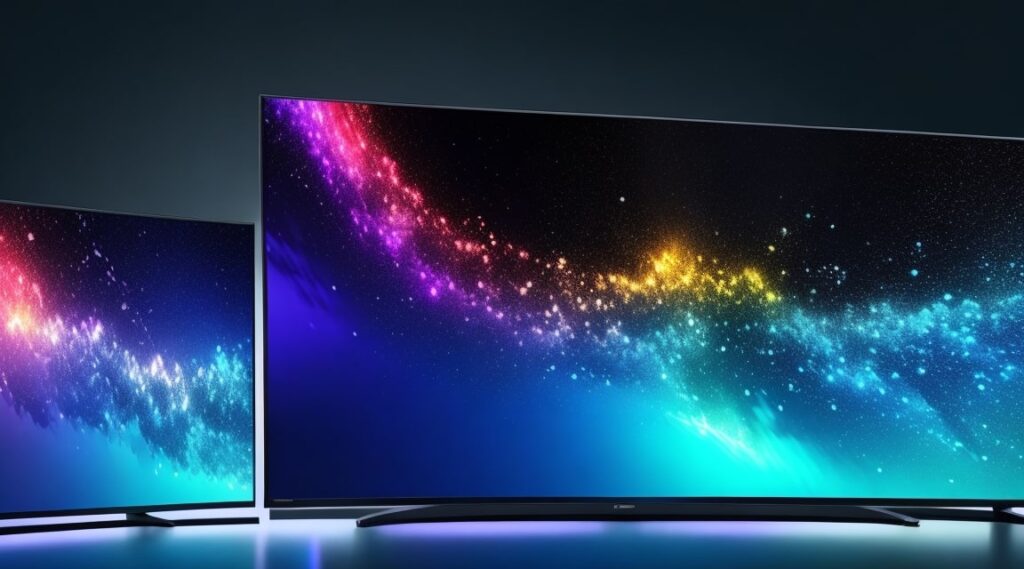
Quantum dot displays harness the power of nanocrystals that emit precise colors when stimulated by an external light source. These cutting-edge displays provide a broader range of vibrant colors, heightened brightness, and superior energy efficiency in comparison to conventional LCDs. As this technology continues to advance, we can anticipate a significant proliferation of quantum dot displays, delivering elevated picture quality and heightened color accuracy for an increasingly immersive visual experience.
Holographic Displays

Holographic displays utilize the principles of light diffraction and interference to generate mesmerizing three-dimensional images. Although currently in the experimental phase, holographic displays possess enormous potential across various fields, including teleconferencing, medical imaging, and entertainment. Advancements in holographic display technology will prioritize enhancing image quality, expanding viewing angles, and enabling larger display sizes, paving the way for even more immersive and realistic visual experiences in the future.
Energy-Efficient Displays
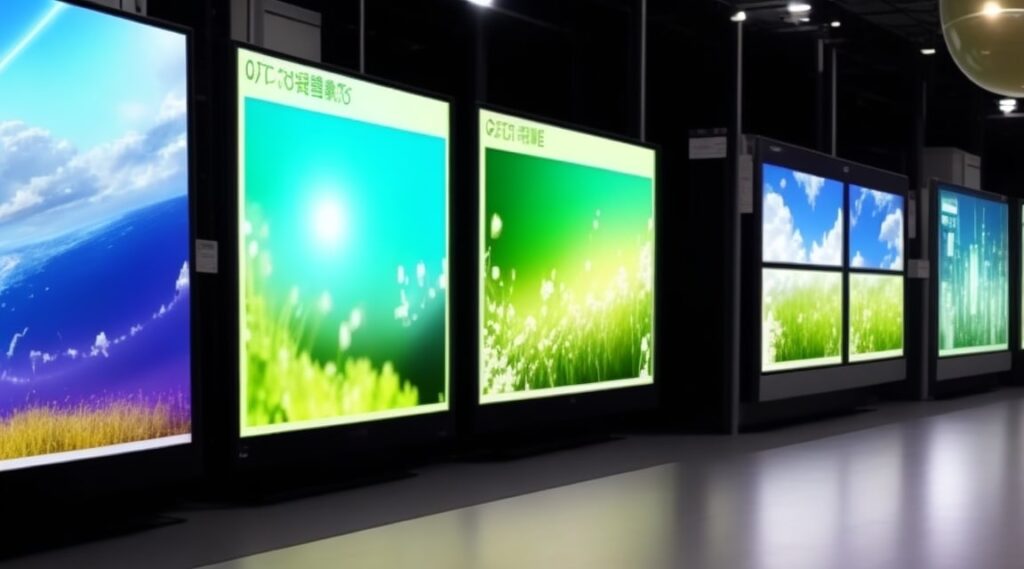
Energy efficiency has become a critical factor in display technology as consumers demand longer battery life and reduced environmental impact. Future developments will focus on reducing power consumption while maintaining high display quality. Advancements in LED backlighting, power management, and display materials will contribute to more energy-efficient displays in the future.
Interactive Touchscreens
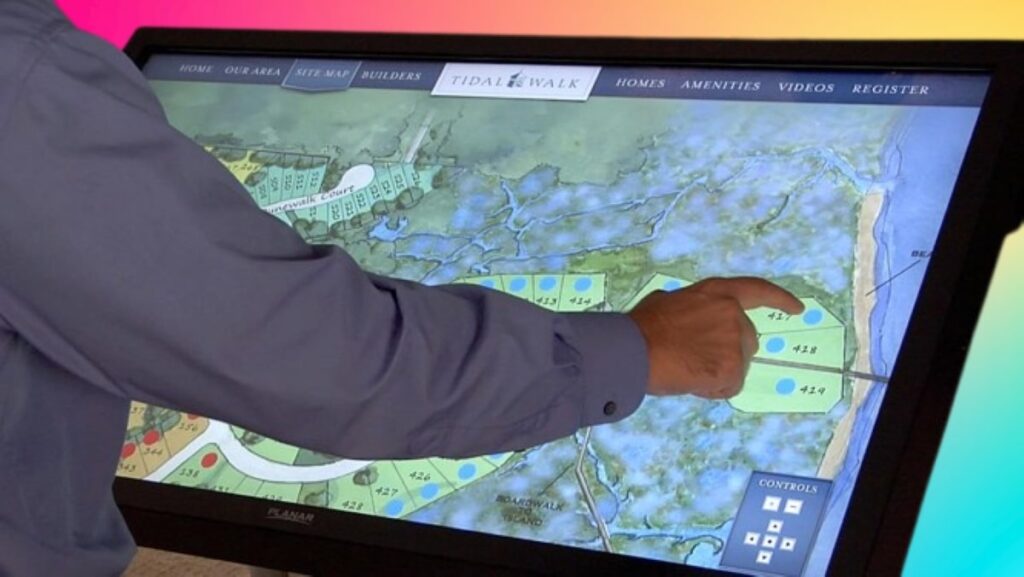
Interactive touchscreens have seamlessly integrated into our everyday lives, spanning across smartphones, tablets, interactive kiosks, and smart home devices. Looking forward, these touchscreens are poised for remarkable advancements, promising heightened touch sensitivity, immersive haptic feedback, and natural gesture recognition. This future landscape holds great potential, revolutionizing our interactions with technology.
Imagine effortlessly navigating through menus with the lightest touch, feeling subtle vibrations as you interact with virtual environments, and controlling devices with intuitive gestures. These developments will transcend industries, offering engaging and personalized experiences in education, healthcare, entertainment, and beyond. The future of touchscreens is a captivating one, where our digital encounters become more lifelike, intuitive, and enchanting than ever before.
Display Technology in the Automotive Industry

The automotive industry is embracing advanced display technology with open arms, aiming to elevate driver experiences and bolster vehicle safety. From head-up displays (HUDs) to augmented reality windshields and digital instrument clusters, display technology is revolutionizing the automotive sector.
Moving forward, the focus will be on seamlessly integrating displays into the vehicle’s interior, delivering real-time information, and enabling heightened connectivity. These future developments promise to reshape the driving experience, offering drivers a wealth of valuable information at their fingertips and fostering a safer and more connected road environment.
Medical Applications of Display Technology

Display technology holds immense significance in the realms of medical imaging, patient monitoring, and surgical procedures. The utilization of high-resolution displays plays a vital role in enabling precise diagnosis and facilitating detailed visualization of medical images. Additionally, wearable displays empower healthcare professionals with real-time access to critical patient data, enhancing the quality of care.
Looking ahead, future advancements in display technology will concentrate on enhancing image quality, expanding display size, and integrating advanced functionalities such as augmented reality for surgical planning and training. These developments promise to revolutionize the healthcare landscape, enabling more accurate diagnoses, improved surgical outcomes, and enhanced training opportunities for medical professionals.
Gaming and Entertainment
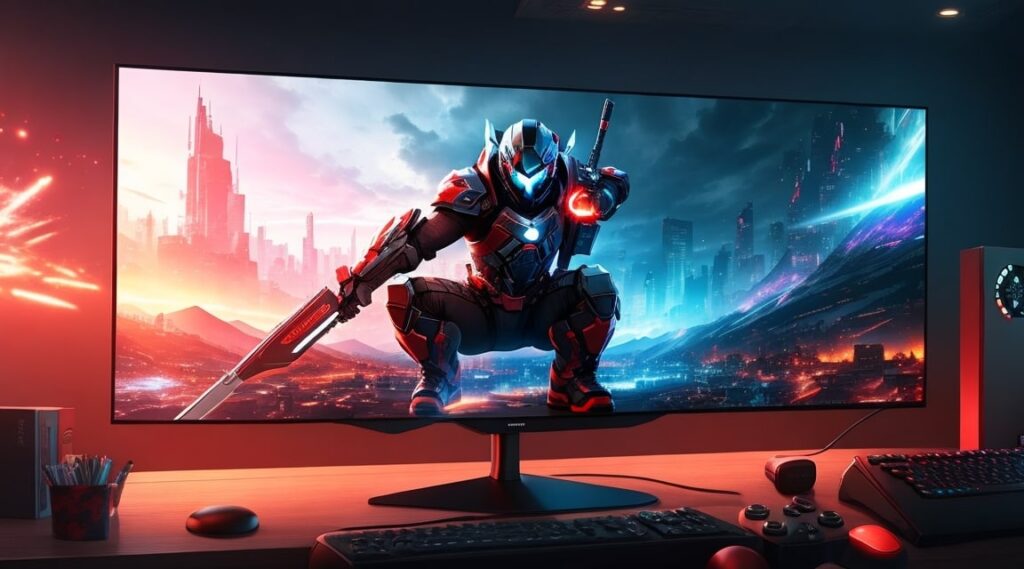
The gaming and entertainment industry is intricately woven with display technology, forming the backbone of immersive and captivating experiences. Gaming enthusiasts crave the trifecta of high refresh rates, swift response times, and stunning high-resolution displays that breathe life into their virtual adventures.
Looking ahead, we can anticipate an exciting wave of advancements in display technology, set to elevate gaming graphics to new heights, unlock higher frame rates for smoother gameplay, and transport us into even more immersive virtual reality realms. Brace yourself for a future where visual innovation seamlessly merges with interactive entertainment, as display technology continues to evolve and mesmerize gamers and enthusiasts worldwide.
Wearable Displays

In recent years, wearable displays like smartwatches and smart glasses have experienced a surge in popularity among young audiences. These compact gadgets offer users convenient access to information, notifications, and vital health data. Moving forward, the industry is set to concentrate on enhancing display quality, extending battery life, and refining the overall form factor. As a result, we can expect even smoother integration of displays into everyday wearables, delivering improved functionality and elevating the user experience to new heights. Brace yourself for a future where wearable displays seamlessly merge with our daily lives, empowering us with valuable insights and convenience at our fingertips.
Conclusion for Future Developments in Display Technology in Upcoming Years
The future of display technology brims with thrilling opportunities and endless potential. With the emergence of OLED and MicroLED displays, alongside the advent of flexible and foldable screens, we stand on the cusp of a revolutionary transformation across multiple industries. These advancements will not only enhance user experiences but also reshape the boundaries of what is possible. Imagine transparent displays seamlessly integrating into our surroundings, augmenting reality with captivating overlays and transporting us into immersive virtual realms.
As technology progresses, energy-efficient displays will become the norm, minimizing environmental impact while delivering stunning visuals. Interactive touchscreens will continue to evolve, fostering intuitive and engaging interactions that bridge the gap between humans and machines.
Moreover, the convergence of display technology in the automotive and medical sectors will redefine how we interact with vehicles and revolutionize healthcare, paving the way for safer roads and more effective treatments. The future is bright, vibrant, and brimming with endless possibilities as display technology propels us into a new era of innovation and interconnected experiences.
References
https://en.wikipedia.org/wiki/History_of_display_technology
https://en.wikipedia.org/wiki/Comparison_of_display_technology
https://en.wikipedia.org/wiki/LED_display
https://en.wikipedia.org/wiki/Flexible_display
https://en.wikipedia.org/wiki/Liquid-crystal_display
https://en.wikipedia.org/wiki/Flat-panel_display
https://en.wikipedia.org/wiki/See-through_display
https://en.wikipedia.org/wiki/Quantum_dot_display
https://en.wikipedia.org/wiki/OLED
Read more about Top Tech Trends in the market by Blogging Tech Kingdom
FAQs
What is OLED display technology?
OLED stands for organic light-emitting diode. It is a display technology that uses organic compounds to emit light when an electric current is applied.
How are flexible displays made?
Flexible displays are made using flexible substrates such as plastic or flexible glass. These substrates allow the display to bend and fold without breaking.
What are transparent displays used for?
Transparent displays have applications in industries like retail, automotive, and architecture. They can be used to display information while maintaining visibility through the screen.
What is the difference between augmented reality and virtual reality?
Augmented reality overlays digital content onto the real world, while virtual reality creates a fully digital environment.
How will display technology impact the automotive industry?
Display technology will enhance driver experiences and vehicle safety through features like head-up displays and augmented reality windshields.
